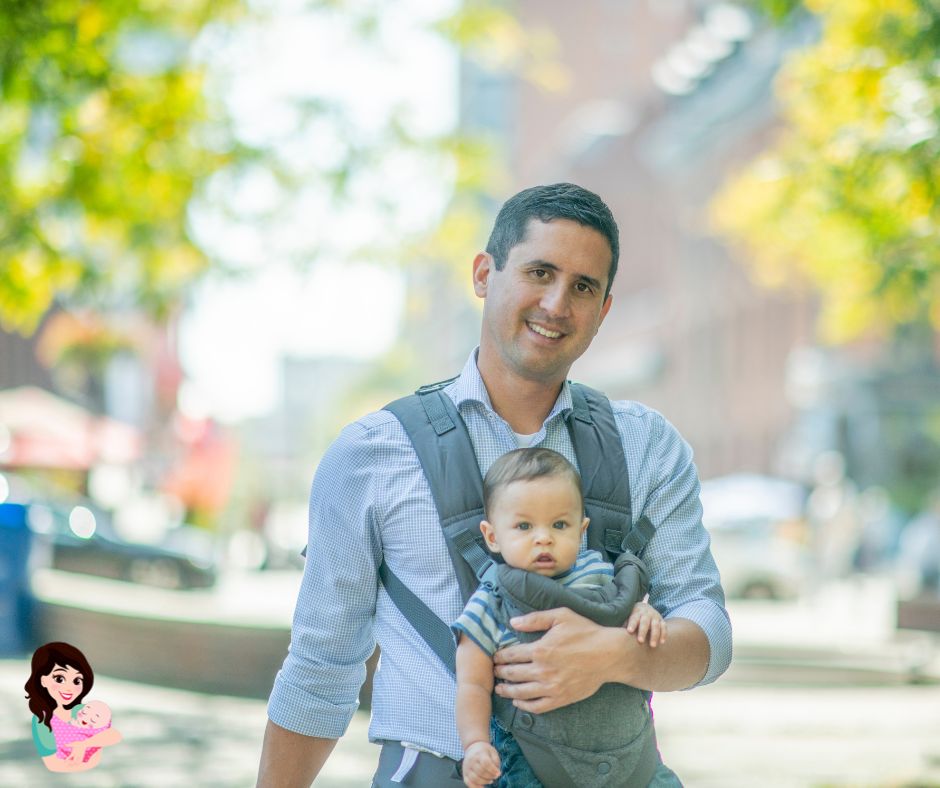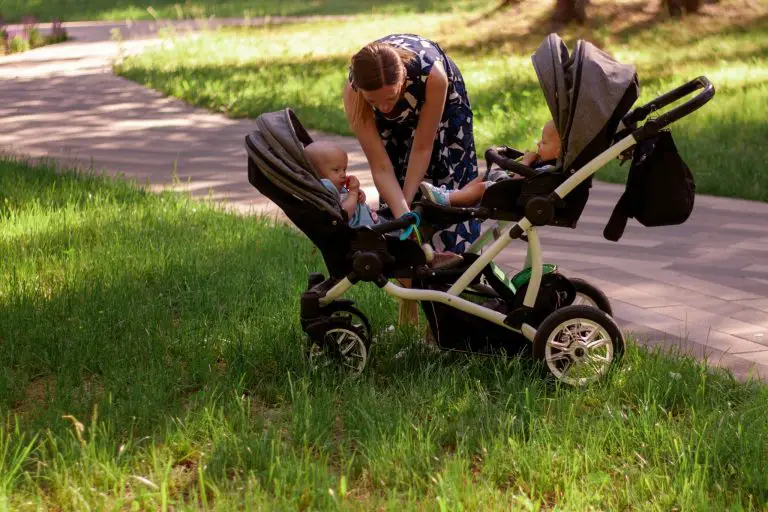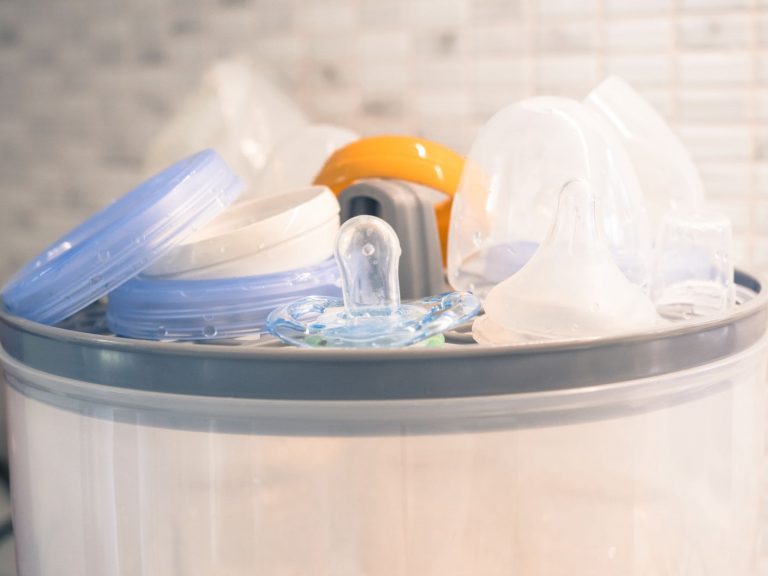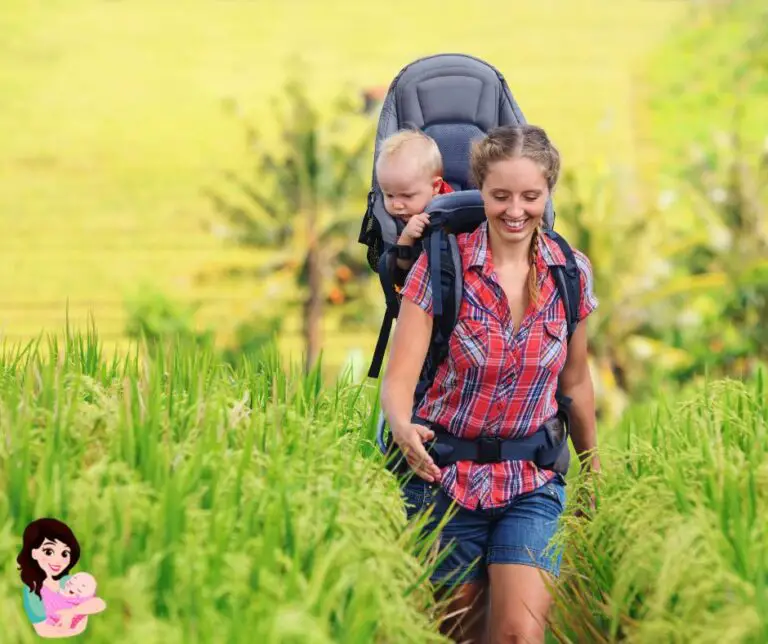
If you are a new parent, overwhelmed with all the conflicting advice out there on correct baby-wearing safety, and want to know if one practice is safer than the other, then congratulations, you’ve come to the right place. In this article, I will break down when and how a baby can face out in a front carrier. To start, when can a baby face out in a front carrier?
A baby can face out between 4-6 months old. The key is that the baby must be able to support his head, neck, and shoulders. The baby should also have good head and neck control when he faces out. All babies develop at different rates, but if your child has met all of these criteria, she is ready to face out in a carrier:
What Is a Front Carrier?
A front carrier is a device used to carry children in front of parents while they are walking. These carriers can be made of various materials, from plastic and metal to fabric.
They may also have different designs and features that make it easier for parents to use them and for children to ride in them comfortably. A front carrier may be used for many purposes, including transportation, recreation, and exercise.
Some people even use them as an alternative to strollers or baby car seats when traveling with babies or toddlers. Front carriers are usually designed for infants who weigh up to 15 pounds (6.8 kilograms), but some models can accommodate toddlers weighing up to 45 pounds (20 kilograms).
Pros and Cons of Facing a Baby Forward in a Front Carrier
The following are the pros and cons of facing a baby forward in a front carrier
Pros
1. It gives them the ability to be more active
One of the biggest benefits is that it gives babies the ability to look around and see what’s going on around them. This helps with their development as they get to interact with their environment, which in turn helps them learn new things and develop new skills.
2. It gives them a better view of the surrounding
A forward-facing carrier puts your baby in a position that allows them to see what’s happening around them, which they will love. This is especially true if they’re facing forwards while hiking or out in nature. They’ll be able to look up at trees and other sights they might not have otherwise seen while being carried on your back.
3. Facing babies forward makes it easier to talk and check on them
Facing a baby forward in the carrier is often easier for parents to see, talk to, and interact with their baby. It also allows you to see your baby’s facial expressions. This can be especially helpful when your baby is crying or fussing and you want to reassure them as quickly as possible.
4. It gives them the room to communicate
In some cases, when a baby is facing forward in a carrier, they will feel more secure and want to communicate with their parents. This may mean that they make more eye contact or smile more often. In other cases, it just means that you can read their facial expressions better when you’re carrying them this way because there aren’t as many distractions for them behind you.
5. Your baby will learn how to turn his head more easily
Your baby’s ability to turn his head from side to side will improve significantly when he faces forward because he’ll be able to observe objects that are directly in front of him, which improves his ability to turn his head while seated or lying down. This is important because it allows him to develop his neck muscles earlier in life than if he faced outward or inward.
Cons
1. Back is less supported
To face your baby forward, you’ll need to use a carrier that has an infant insert. The insert will support the bottom half of your baby’s body, but it won’t support their backs This can be uncomfortable for both you and your little ones once they start getting heavier or if they fall asleep in the carrier. You may find yourself leaning forward as you walk so that you can support your weight on your back muscles instead of on your poor little spine.
2. The Baby’s head is unsupported
When your baby faces forward, their heads hang down and don’t have any support from behind them (like it does in a hip carry position). This means that even if they’re not sleeping when you first put them into the carrier, they may fall asleep while facing forward and wake up with a sore neck by the time they’re ready to come out.
3. Prolonged carrying may lead to posture issues
The baby’s weight is not evenly distributed on your body when you use a front carrier. The baby’s weight is shifted forward, so the back and shoulders take all the strain. Over time, this can cause problems with posture. The best way to avoid this problem is to limit wearing your baby in a carrier for long periods and only use it for short trips such as going downstairs or walking down the street. If you can’t avoid carrying your baby for long periods, make sure that you always have breaks from wearing them in a carrier and allow yourself some rest time between uses.
4. Leg and hip damage can occur if not positioned properly
If your baby’s legs are tucked behind yours and their knees aren’t bent at all then they are likely to get injured by being carried like this. For example, if their legs are straightened out like this then they will be unable to move them properly while they are being carried which could cause muscle damage or even paralysis if carried like this for too long without moving their legs at all.
How to Face Out a Baby in a Front Carrier
Follow these steps to face out a baby in a front carrier:
Make sure the carrier is buckled securely. Place your baby on his back in the carrier, with his legs hanging over the edge of the sling and his head lying against your shoulder. Buckle the straps around your waist and chest. Tighten them until they are snug but not uncomfortable.
Lift your baby’s legs until they are bent at the knees, then press them into the bottom of the sling with one hand while adjusting the waist strap with your other hand so that it is snug without being too tight. Spread out both sets of fabric so that they are perpendicular to each other and tighten both buckles until they’re snug but not too tight. This will keep your baby secure while you move around.
Is It Safe to Put a Baby in a Carrier?
Yes, it is safe to put a baby in a carrier. The key is using the right type of carrier, making sure you’re using it properly and not overdoing it. Carriers and slings are safe for most babies, but there are some important guidelines to follow to prevent injury.
A baby carrier is a great way to allow your child to be close to you, but it’s not safe for every age or weight. Babies should always be kept in a carrier or sling that has been safety tested. Babies should never be carried in a car seat, pram, or bouncy chair. They are not designed to support your baby’s weight and their straps may not hold the child securely.
Other Ways to Carry a Baby
There are other ways to carry a baby beside the standard front carrier. Here are just a few of them:
1. Baby sling
A baby sling works in much the same way as a front pack, only instead of wearing it on your back, you wear it around your waist. The idea is that you can carry your baby close to your heart, which helps them feel more secure during sleep (and when they’re awake too). Slings come in different sizes and designs so that you can find one that suits both you and your little one best.
2. Backpacks
Backpacks aren’t just for school anymore! Backpacks with waist straps can be used as a hands-free way to carry older babies and toddlers, at least up until they’re too big for them.
Final Note
Ultimately, it looks like the recommendations of a pediatrician are your best bet when determining if your baby is too young to face out in a front carrier. While there is debate about when to face forward and when to keep them facing inward, it looks like being conservative when it comes to safety is the smart move.

Hi, This is Emma Baster; As a mom, I spend my free time caring for my kids. I’ve read a lot on the Internet to improve my childcare skill and bring the best to my kids. Eruditemommy shares my knowledge and experience through helpful posts. I hope you enjoy them!







